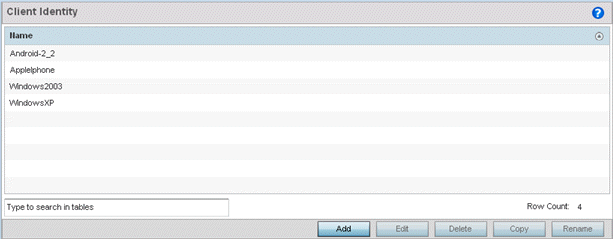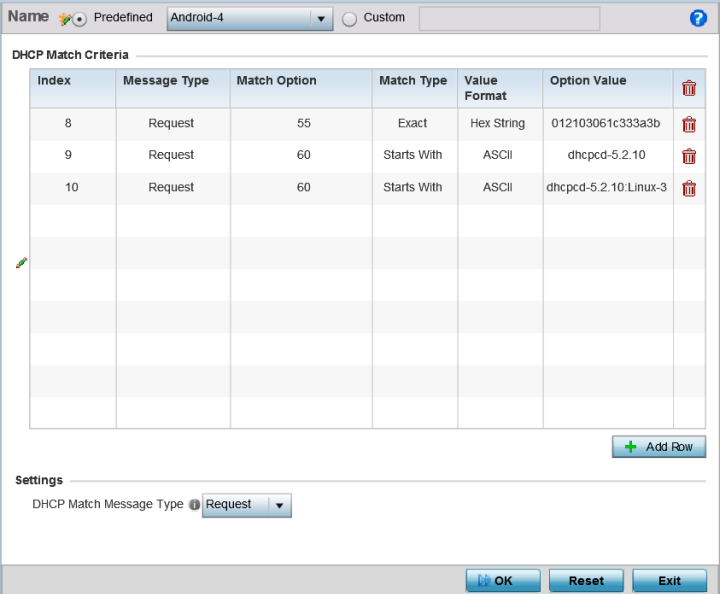Configuring Client Identity
About this task
Device fingerprinting assists administrators by controlling how BYOD devices access a corporate wireless domain.
Device fingerprinting uses DHCP options sent by the client in request or discover packets to derive a unique signature specific to device class. For example, Apple devices have a different signature from Android devices. The signature is used to classify the devices and assign permissions and restrictions on each device class.

Note
Ensure DHCP is enabled on the WLAN on which device fingerprinting is to be enabled.To define a device fingerprinting configuration on controllers, service platforms and access points:





